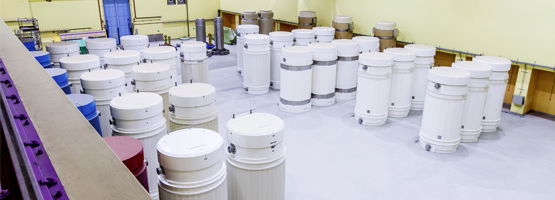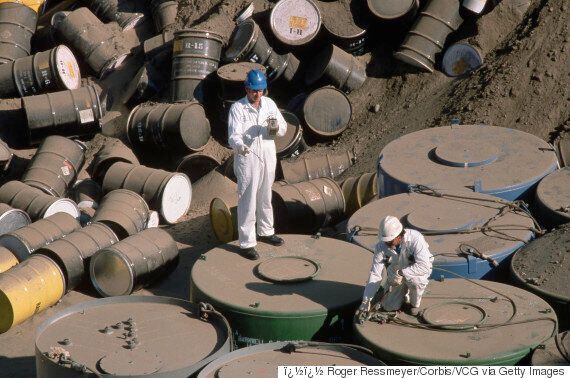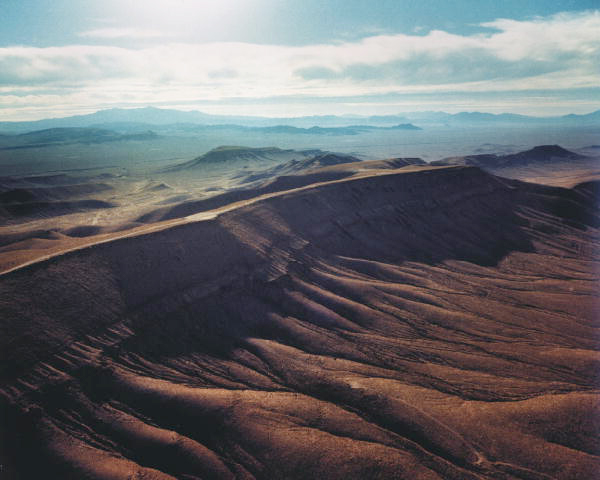Nuclear Energy:
Reading to date:
You ,may have read the chapter on Nuclear energy from David's book before we start this discussion. This is a dense chapter that explores the basics of energy generation from various types of nuclear processes and resources.
Forms of Nuclear Energy:
Fusion:
When we generate energy from nuclear processes the first distinction we need to make is between fusion and fission. For clarity, fusion is the nuclear process the sun uses to keep us warm and happy and is based on bringing together light atoms (like Hydrogen or Helium) at high temperatures. This process releases substantial amounts of energy as evidenced by the sun. This process is pretty clean from the perspective of waste products but has the disadvantage that we haven't actually figured out how to do it yet. The refrain in the world of nuclear fusion is "Just give us another 10 years and we'll have it working!" which has been going on for roughly 50 years at this point.
Fission:
Fission is the process used by all current commercial nuclear reactors and extracts energy from the chain reaction of heavy unstable atoms like U235 which only need a little bit of added energy to be convinced to split and release a large amount of energy. This energy is used to boil water into steam and run a standard steam powered electrical generation system. The fission process is also very efficient but does produce byproducts (waste) that is hazardous to humans in various ways for relatively long periods of time. We have been using this form of nuclear power for roughly 60 years (the first reactor was constructed in 1942 and early electricity production began in the 50's) Nuclear power has been a commercial thing for about 60 years.
Why even think about it?
As we have seen every time we look at energy use in California (CA ISO) roughly 2/3 of the energy need is called base load. This is energy that needs to be available 24/7/365! All of the various sustainable (green) energy sources we have looked at are variable on a hour to hour basis and in a broad sense are actually operating about 25% of the time (25% capacity factor) Nuclear power has a capacity factor of 90% (a little down time for maintenance) and is well suited to meeting base load needs.
In addition nuclear power produces no greenhouse gasses while generating our most portable and broadly usable form of energy. As the question of greenhouse gasses and climate change evolves nuclear power may be the only way to meet our current levels of energy use without demanding substantial social change.
But is it Sustainable?
Because nuclear reactors use a fuel that is mined from the earth is it necessarily not as infinite a resource as wind or solar. Never the less it is calculated that probably resources for our current reactor technologies are expected to last on the order of 1000 years and some alternative technologies could last 10's of thousands of years. If we actually figure out how to harness the fusion process then we can not run out of fuel given that the universe is made of hydrogen. Depending on how you see this, nuclear power is nearly sustainable on the scale of human civilization with the potential to be truely sustainable.
So, what are the issues?
Footprint is not one of them. The nuclear power plants currently operating in the world have nameplate capacities between 0.5 GW and several GW. They take up relatively little space leading to energy densities of multiple 1000's of W/m2. Relatively speaking they take up no space.
The real issues can perhaps be boiled down to process development and economics, proliferation, and risk/waste management. All of these concerns tend to be interrelated which makes them challenging to discuss. We'll give it a try but we will undoubtedly have to skip back and forth as we do so.
Process Development:
It is no surprise that there are a variety of different reactor designs that use different fuels and different cooling systems. I find myself hard pressed to know where to begin this part of the discussion. 'Standard' reactors around the world are built around U235 as a fuel. U235forms a small fraction of the overall uranium ore that is mined and must be purified to reach a concentration that can be used in reactors. Further purification leads to material that can be used to make nuclear weapons which leads to concerns about proliferation (this is the current concern with Iran and it's purification systems). Another form of reactor is a breeder reactor which can use lower grade fuel but the byproducts of this process are more easily converted into weapons. If you start digging into this you will find endless discussions about processes to explore. The core problem is that we have become so 'afraid' of nuclear power that we haven't done the research to figure out these new processes and how to manage them best. Thorium reactors are an interesting case in point in that they produce byproducts that are quite difficult to turn into weapons, and there is lots of Thorium in the world, but their waste products are initially more dangerous though not for long.
Another process related issue with nuclear power is related to the NIMBY discussion we had earlier. Regardless of actual risk (which we will talk about momentarily) nobody seems to want a nuclear power station in their back yard. For a variety of reasons one of the major costs of constructing a nuclear power plant are the permits and approvals that sometimes take decades to complete. It has been suggested that we could choose to approve a standard reactor design, much like we have buiding standards for houses, at the national level and grant automatic approval for power plants built with this design. Taking this approach would also allow power plant design to keep up with best practices in the industry. At this time all nuclear power in the US use Gen 2 plant designs when Gen 3 designs are the current best practice from a safety and operational perspective. Again, taking a national approach to nuclear power has the potential to address this.
Proliferation:
Proliferation is the concern that, in some cases, the byproducts from nuclear power plants can be used to build nuclear weapons. Currently there are 5 countries that are recognized as having nuclear weapons - US, Russia, UK. France, and China. There are 4 additional countries that say they have them or are suspected to have nuclear weapons - India, Pakistan, North Koriea, and Israel. South Africa and the former Soviet Republics once had nuclear weapons and have destroyed or removed them. It is widely believed that possibility of nuclear weapons being used increases if more countries were to have them. Nuclear reactors are a primary source of the raw materials for building weapons which is why the current concern over Iran's desire to, it says, generate nuclear power. In some cases countries respond to this concern by letting international inspectors visit their facilities randomly and providing extensive documentation of where are the fuel and byproducts from the power plant go. Another strategy is to use nuclear power technology which does NOT produce weapons grade byproducts. Thorium reactors are a reactor design that does not produce byproducts which are easily weaponized. The trade off is that the reactor is somewhat less efficient and the byproducts are initially a bit more dangerous (over the long term they are less dangerous!). It is important to note that proliferation is an issue for nuclear power on an international level but is not particularly relevant to the question of nuclear power in the US. It is probably relevant to note that France currently generates over 75% of it's electricity from nuclear power which doesn't seem to keep people from wanting to visit or spend time in France (just saying:)
Risk: Personal
Well, this is the big one. Helping people understand the actual risks of living near a nuclear power plant might help on the NIMBY front but we, as humans, are remarkably poor at actually making good risk assessments. We are at much greater risk walking across Bend to visit a friend or have a burger than we would be living in the shadow of a nuclear power plant. Currently many more people die installing solar panels on roofs each year than have EVER died building nuclear power plants. The most recent disaster in Fukushima (after a major earthquake, a tsunami, and a reactor meltdown) only led to 1 death directly from radiatiom. The data is clear that the actual risk of death from nuclear power is the lowest of ALL the forms of energy generation. Coal and oil top the list of risky sources of energy both for the industry that constructs and operates the power plants and for consumers.
Risk: Waste
This is the greatest perceived risk of nuclear power which is the management of the 'waste' products from a nuclear power plant. It is important to acknowledge that the by products of nuclear power are a health risk. On the flip side the volume of waste is quite modest which makes it possible to pay close attention to the waste. This image is purported to be all of the nuclear waste from Swiss reactors for 45 years. I can't verify this though it seem plausible. The US would have about 30 times this much waste since the begining of nuclear power in this country.

I would say that the image above is in stark contrast to the image below, from Hanford in Washington state, which is more how we imaging nuclear waste in this country. It is probably more helpful to think of these as best case and worst case scenarios.

Because the waste products from nuclear power are concentrated we tend to see images like these. There is plenty of waste in the production of solar panels and wind turbines but it tends to be distributed in many different places across the manufacturing and installation processes so we tend to not see it all in one place. There are hazards associated with the waste from solar and wind production but it's more understandable risk so we don't fear it so much.
Yucca Mountain:
For several decades there was a consistent effort to identify and construct as safe a facility for storing waste from various nuclear processes. That effort was focussed on Yucca Mountain along the California- Nevada border under 1000 m of granite in one of the driest parts of the US. Currently nuclear waste is held in a wide range of conditions and locations, mostly at nuclear power plants, which are relatively close to major urban centers. It is a notable examply of NIMBY-ism that the senior senator from Nevada, Harry Reid (D), refused to let the project proceed. In 2011 the project was cancelled, apparently for purely political reasons, and no alternative has been proposed since.

Regardless of how I might feel about nuclear power we have a lot of existing nuclear waste and the science is clear about the need to store it as safely as possible. Why we can't figure this out is beyond understanding in some ways.
Conclusion: Nuclear or Not?
I would like to believe that this is an open question for which the answer could be yes or no. In the years that I have been teaching this class and watching the development of energy policy in this country, and around the world, I am finding it ever more difficult to see the evidence as neutral on this question. Whether you are concerned about the effects of the generation of greenhouse gases by humans, or just thinking ahead about future energy needs, the evidence is that nuclear needs to be a real part of the discussion. In the US at this time our approach to nuclear power seems to be very much to put our heads in the sand and hope that the issue will go away or be solved by someone else. As David MacKay would say we need to have a grown up conversation about this. Look at the science and assess the risks honestly. Science is not perfectly correct all of the time and bad accidents happen from time to time but actual data is a better guide than our intuition.
